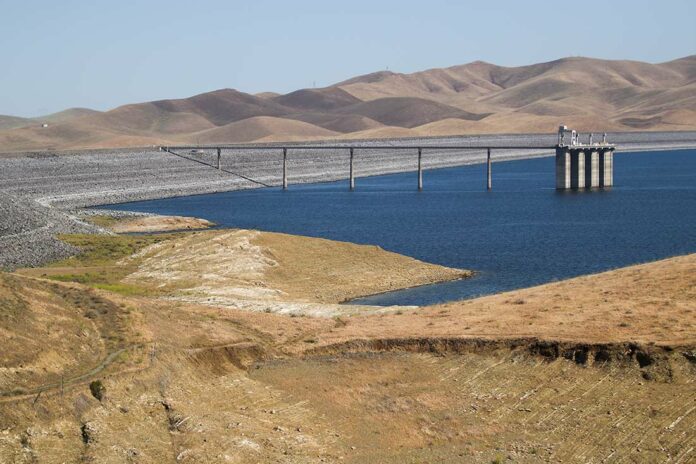
As California faces a likely fourth consecutive year of drought, state water managers Dec. 1 announced a meager 5 percent water allocation for 2023.
While allocations could change based on precipitation levels during the next few months, officials at the state Department of Water Resources are bracing for more bad news.
“This early in California’s traditional wet season, water allocations are typically low due to uncertainty in hydrologic forecasting,” DWR Director Karla Nemeth said in a news release. “But the degree to which hotter and drier conditions are reducing runoff into rivers, streams and reservoirs means we have to be prepared for all possible outcomes.”
Currently, more than 99% of the state is experiencing drought conditions, with about 85% classified as being in a severe, extreme or exceptional drought, according to the U.S. Drought Monitor.
Also, Lake Oroville, the State Water Project’s largest reservoir, is at about 55% of its average for this time of year, slightly better than last year’s historic low volume.
The 5% allocations affect 29 public water agencies that serve 27 million Californians and 750,000 acres of farmland that rely on the State Water Project, one of two main systems that capture, store and deliver the bulk of the state’s water supplies.
In 2022, DWR set initial allocations at zero but eventually provided 5% of requested water deliveries to State Water Project recipients, which was also the same allocation set in 2021.
The ongoing drought, the worst since 1976-1977, and lack of deliveries from the state and the Federal Bureau of Reclamation’s Central Valley Project—which provided just 25% of allocations this year—left drinking water systems scrambling to find new sources of water and redoubling conservation efforts.
For example, the Santa Clara Valley Water District, a wholesaler that provides drinking water to 2 million people, set a 15% water use reduction goal, which it exceeded by 1% in July and August.
It also drew from a groundwater “bank” from outside the county and bought emergency supplies from other water systems—sources which will likely become increasingly scarce as the drought drags on.
“This initial allocation serves as a stark reminder that the drought emergency is not over,” Valley Water board chair pro tem John Varela said. “We’re thankful for the early season rainfall and we hope to see more storms this winter. But we must continue to reduce our water use.”
In addition to drinking water systems, many agricultural water users received very little or none of their allocations in 2022, leading to what a new report from the University of California at Merced identified as “direct economic impacts on farm activity of $1.2 billion” and the fallowing of 395,000 acres of farmland.
“Here we go again,” said California Farm Bureau president Jamie Johansson in a news release. “California has failed to act on critical projects to provide additional water storage, stormwater capture and groundwater recharge that are needed to protect our farms and cities from water shortages in dry years.”
The National Weather Service predicts a chance of rain through the weekend in South Santa Clara County and San Benito County, with lows in the upper 30s.
Copyright © 2022 Bay City News, Inc.







